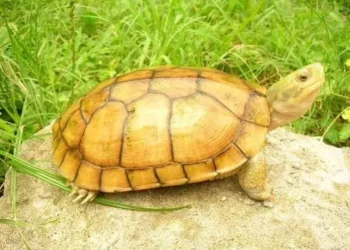Corn snakes (Pantherophis guttatus) are one of the most popular pet snakes due to their docile nature and manageable size. To ensure their health and well-being, it is crucial to replicate their natural habitat as closely as possible. One key element in their care is providing an appropriate heat source. In this article, we will explore the role of heat mats in corn snake husbandry, discuss how to select the right wattage, and provide guidelines for proper usage.
Understanding the Corn Snake’s Thermal Needs
Corn snakes are native to the southeastern United States, where they experience a range of temperatures in their natural habitat. They are ectothermic animals, meaning they rely on external sources of heat to regulate their body temperature. In captivity, it’s essential to create a suitable thermal gradient in their enclosure to mimic their natural environment.
The Importance of Temperature Regulation
Temperature regulation is vital for several reasons:
Digestion: Corn snakes rely on external heat sources to aid in the digestion of their food. Inadequate temperatures can lead to poor digestion and health issues.
Metabolism: Proper temperature helps regulate the snake’s metabolism. Cold temperatures can lead to a slowed metabolism and lethargy, while excessively high temperatures can cause stress and overheating.
Behavior: Corn snakes exhibit natural behaviors such as basking and seeking cooler areas. A well-regulated temperature gradient allows them to perform these behaviors, promoting overall well-being.
Heat Mats: An Overview
Heat mats, also known as heat pads or heat tapes, are a common method of providing supplemental heat to reptiles. They are designed to be placed underneath or on the side of an enclosure to create a warm surface for the snake to bask on.
Types of Heat Mats
Heat Pads: These are typically made of a flexible material that can be adhered to the bottom or side of the enclosure. They are available in various sizes and wattages.
Heat Tapes: These are similar to heat pads but come in a roll and can be cut to the desired length. They are often used for larger enclosures or for custom heating solutions.
Determining the Right Wattage
Selecting the appropriate wattage for a heat mat involves considering several factors:
Enclosure Size: The size of the enclosure affects the wattage needed. Larger enclosures require higher wattage to achieve and maintain the desired temperature gradient.
Ambient Room Temperature: The temperature of the room where the enclosure is located impacts the heat mat’s effectiveness. In cooler rooms, a higher wattage may be needed.
Type of Enclosure: The material and design of the enclosure (e.g., glass, plastic, or wood) influence heat retention and distribution. Enclosures with good insulation may require lower wattage.
Desired Temperature Gradient: Corn snakes require a temperature gradient, typically ranging from 75-85°F (24-29°C) with a basking spot reaching up to 90°F (32°C). The wattage of the heat mat should be chosen to maintain this gradient effectively.
See Also: Do Corn Snakes Have Venom?
Calculating Wattage Requirements
To determine the appropriate wattage for your corn snake’s heat mat, follow these guidelines:
Measure the Enclosure: Determine the size of the enclosure in square feet or meters. This will help in selecting a heat mat with sufficient coverage.
Consider Ambient Temperature: If the room temperature is significantly lower than the ideal range for your corn snake, you may need a higher wattage to compensate.
Account for Insulation: Enclosures with poor insulation or those made of materials that don’t retain heat well might require higher wattage.
Example Calculation
For a 40-gallon tank (approximately 3 feet x 1.5 feet or 0.9 meters x 0.5 meters) with an ambient room temperature of 68°F (20°C), you might need a heat mat with a wattage of around 15-25 watts. This range allows for adequate heat output without risking overheating.
Installing the Heat Mat
Proper installation is crucial for effective heat distribution and safety:
Placement: Attach the heat mat to one side or the bottom of the enclosure. Avoid placing it directly under the snake’s bedding, as this can cause uneven heating.
Thermostat Control: Use a thermostat to regulate the heat mat’s temperature. This prevents overheating and maintains a consistent temperature gradient.
Monitor Temperature: Regularly check the temperature in different areas of the enclosure using thermometers or temperature probes. Adjust the heat mat or thermostat settings as needed.
Safety Considerations
Avoid Overheating: Overheating can be dangerous for your corn snake. Ensure that the heat mat does not exceed the recommended temperature range.
Use a Reliable Thermostat: A thermostat is essential for regulating the heat mat’s temperature and preventing fluctuations that could harm your snake.
Inspect Regularly: Check the heat mat for signs of wear or malfunction. Replace any damaged mats promptly to avoid potential hazards.
Alternative Heating Options
While heat mats are a popular choice, other heating options can also be effective:
Heat Lamps: Provide overhead heat and light, simulating natural sunlight. They can be used in conjunction with heat mats to create a more natural environment.
Under-Tank Heaters: Similar to heat mats but designed specifically for tank use. They often come with built-in thermostats.
Ceramic Heat Emitters: Provide heat without light, suitable for nocturnal snakes or those needing a constant heat source.
Conclusion
Selecting the appropriate wattage for a corn snake’s heat mat is essential for maintaining their health and well-being. By considering factors such as enclosure size, ambient room temperature, and desired temperature gradient, you can choose a heat mat that meets your snake’s needs. Proper installation and regular monitoring ensure that the heat mat provides a safe and effective heat source. With the right setup, your corn snake will thrive in its well-regulated habitat, enjoying a healthy and active life.
Related Topics:
























